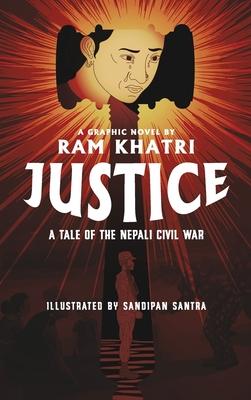Picture this: "It was a simple life; a peaceful life," muses Tara, the vibrant narrator of Ram Khatri's graphic novel. But hold on, buckle up, because Justice takes you on an emotional roller-coaster through her Nepali farming family, flipping her innocent childhood upside down. We're talking about early 2000s chaos, where Nepal became a battleground between Maoist revolutionaries and government forces. Tara's dad? Pressured to pick a side. Neighbors? Turning on each other. Young folks? Dragged away to fight. Tara's parents? Trying to dodge the drama, until Maoist rebels and government soldiers visit their home one after another, turning their barn into a hiding spot. And when the worst happens, Tara's left blaming herself.
But here's the twist - the storytelling in Justice isn't your typical tearjerker; it's a tense, heartfelt saga casting shadows over what was once a sunny childhood. This isn't just any story; it's a unique tale standing tall in the mainstream book market, rooted in the Nepali Civil War with characters and settings that pop off the page.
Let's talk about Tara's family, living the farm life during the Maoist armed conflict (1996-2006). Her elder brother? Abducted by Maoist rebels and disappeared. Cue the upheaval - threats, blame, and beatings from government soldiers. The family becomes the village outcasts, and they've got no choice but to ditch their cozy village home for a safer spot with relatives. Amidst all this, Tara and her sister, Maya, still hit the books as tensions soar.
But wait, there's more! Tara's parents, hungry for justice, head to Kathmandu, and spoiler alert - it's not a smooth ride. Dad passes away, Mom continues the hunger strike, and Tara spills all the feelings - sentiments, tensions, and worries about what the future holds for her family. Oh, and Tara's brother, Sudeep? He makes a mysterious comeback to their abandoned house, leaving us all on the edge of our seats, wondering what went down.
In Justice, you're not just reading a story; you're diving into a roller-coaster of resilience, complexities, and a few good plot twists. So grab a seat, because this graphic novel isn't just a page-turner; it's a heart-pounder, a tearjerker, and a jaw-dropper all in one.
Fact Behind Fiction: In the tumultuous decade of the 'People's War' in Nepal during the 2000s, the toll was devastating - more than 17,000 lives were lost, and thousands of innocent civilians endured abduction and violence at the hands of both government and Maoist forces. Despite the passage of years since the war's conclusion, the fate of nearly 1,400 missing individuals remains unknown. This enduring uncertainty serves as a stark reminder of the unresolved aftermath of the conflict.
The narrative of Justice derives its strength from the grim realities of this post-war era in Nepal. While the characters in the story are fictional, their experiences are grounded in the events that unfolded during and after the Civil War, providing a poignant portrayal of the profound impact on the lives of individuals and the nation as a whole. The narrative thus becomes a powerful conduit for understanding the lasting repercussions of the conflict and the challenges faced by a society attempting to heal from the wounds of war.
